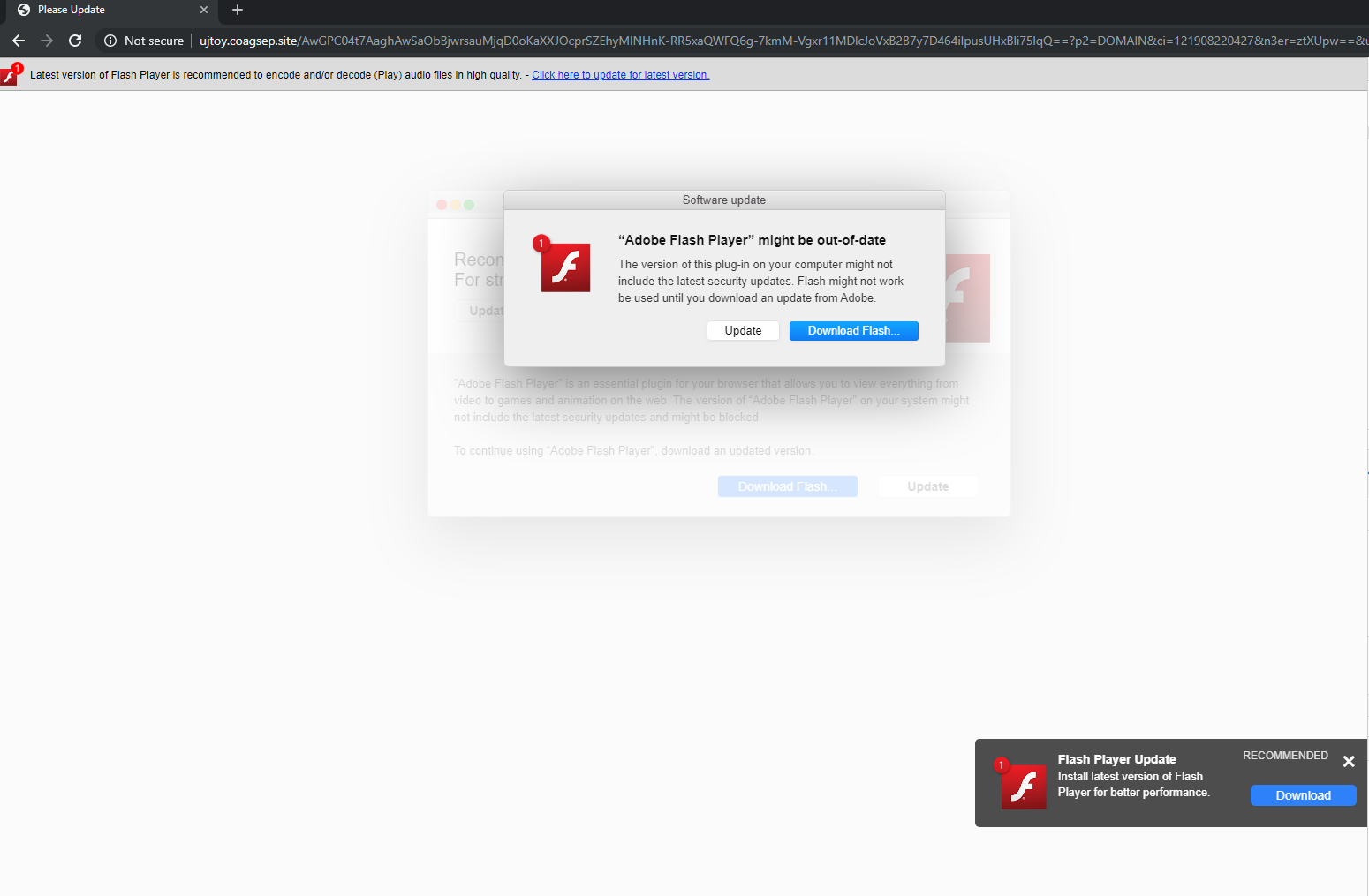These instructions are NOT applicable to Flash Player included with Google Chrome. Visit the Flash Player Help page for instructions on enabling (or disabling) Flash Player in various browsers.
Jan 04, 2021 Download the Flash Player uninstaller for Mac OS X 10.6 and later. Ensure all browsers installed on your Mac are closed. Open the Flash Player uninstaller and click Uninstall. In this step-by-step guide, learn how to uninstall or remove Adobe Flash Player from your Mac computer, and delete any additional related files. Jan 02, 2021 In the past, Adobe's Flash Player had continually suffered from vulnerabilities that exposed Mac and PC users to malware and other security risks that caused vendors like Microsoft and Apple to.
If you use Windows, see Uninstall Flash Player | Windows.
If your Flash Player installation was not successful, use the following solution to reinstall.
Click the Apple icon and choose About This Mac.
The Mac OS version appears in the About This Mac dialog.
2. Run the uninstaller applicable to your Mac OS version
- Run the uninstaller on Mac OS X 10.4 and later, including macOS
Note:

Beginning with Flash Player 11.5, uninstalling the Flash Player resets the AutoUpdateDisable and SilentAutoUpdateEnable settings in mms.cfg to their default values:
- AutoUpdateDisable=0
- SilentAutoUpdateEnable=0
If you are running the Flash Player uninstaller as part of your deployment process, redeploy any custom changes to either AutoUpdateDisable or SilentAutoUpdateEnable.
Run the uninstaller on Mac OS X 10.4 and later, including macOS

Download the Adobe Flash Player uninstaller:
- Mac OS X, version 10.6 and later: uninstall_flash_player_osx.dmg
- Mac OS X, version 10.4 and 10.5: uninstall_flash_player_osx.dmg
The uninstaller is downloaded to the Downloads folder of your browser by default.
In Safari, choose Window > Downloads.
If you are using Mac OS X 10.7 (Lion), click the Downloads icon displayed on the browser.
To open the uninstaller, double-click it in the Downloads window.
Note: If the Flash Player installer window does not appear, choose Go > Desktop in the Finder. Scroll down to the Devices section and click Uninstall Flash Player.
To run the uninstaller, double-click the Uninstaller icon in the window. If you see a message asking if you want to open the uninstaller file, click Open.
- Bookmark or print this page so that you can use the rest of these instructions after you close your browser.
To close all browsers, either click the browser name in the Uninstaller dialog, or close each browser manually and then click Retry.
Note: Do not click Quit in the Uninstaller window. It stops the uninstallation process.
After you close the browsers, the uninstaller continues automatically until the uninstallation is complete. When you see the message notifying you that the uninstallation succeeded, click Done.
Delete the following directories:
- <home directory>/Library/Preferences/Macromedia/Flash Player
- <home directory>/Library/Caches/Adobe/Flash Player
Download the Adobe Flash Player uninstaller:
- Mac OS X, version 10.3 and earlier: uninstall_flash_player_osx_10.2.dmg (1.3 MB) (updated 05/27/08)
Choose Window > Downloads to view the downloaded uninstaller.
Save the uninstaller file in a convenient location.
To open the uninstaller, double-click it in the Downloads window.
To run the uninstaller, double-click the Uninstaller icon in the window. If requested, enter your computer user name and password and click OK.
Bookmark or print this page so that you can use the rest of these instructions after you close your browser. Close all browsers and other applications that use Flash Player, including instant messaging applications, SWF files, and projectors (EXE files that play SWF files). Otherwise, the uninstaller cannot finish (even though it appears to finish).
Once the uninstaller finishes, the window closes automatically.
Remove Adobe Flash Player From Mac
You can verify that uninstallation is complete by following these steps:

Open your browser and check the status of Flash Player.
Important notes
Adobe Flash Player is out of support as of December 31, 2020. For more information, see Adobe Flash end of support on December 31, 2020.
Applying this update will remove Adobe Flash Player from your Windows device.
After this update has been applied, this update cannot be uninstalled.
This update only removes Adobe Flash Player that was installed by your version of Windows. If you installed Adobe Flash Player manually from another source, it will not be removed. For more information about how to remove Adobe Flash Player, see the Uninstall Flash Player | Windows topic on the Adobe website.
Summary
This update removes Adobe Flash Player that is installed on any of the Windows operating systems that are listed in the 'Applies to' section. After you apply this update, it cannot be uninstalled.
Note If you must use Adobe Flash Player again on your device after this update has been installed, use one of the following methods:
Method 1: Reset your device to an earlier system restore point. This feature must be explicitly enabled and a system restore point must have been created on your Windows device before you apply this update.
For more information about system restore point, see Back up and restore your PC.Method 2: Reinstall your Windows operating system, but do not apply this update.
Known issues in this update
Issue | Resolution |
When this update is applied, registry settings for the third-party provided version of Adobe Flash Player may be removed. | To resolve this issue, reinstall the third-party version. |
How to obtain and install the update
Windows Update
Remove Adobe Flash Player Mac
This update is an optional update in Windows Update.
Microsoft Update Catalog
Should I Remove Adobe Flash Player From My Mac
To get the standalone package for this update, go to the Microsoft Update Catalog website.
Windows Server Update Service
This update is an optional update in Windows Server Update Service (WSUS).
References
Remove Adobe Flash Player Mac 2020
Learn about the terminology that Microsoft uses to describe software updates.
